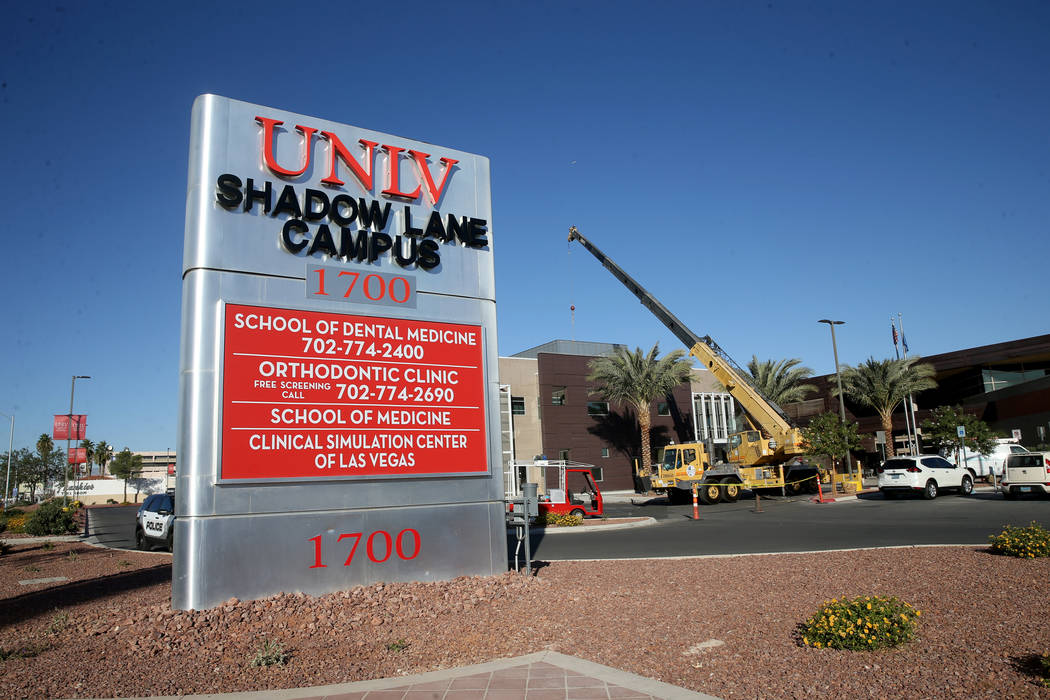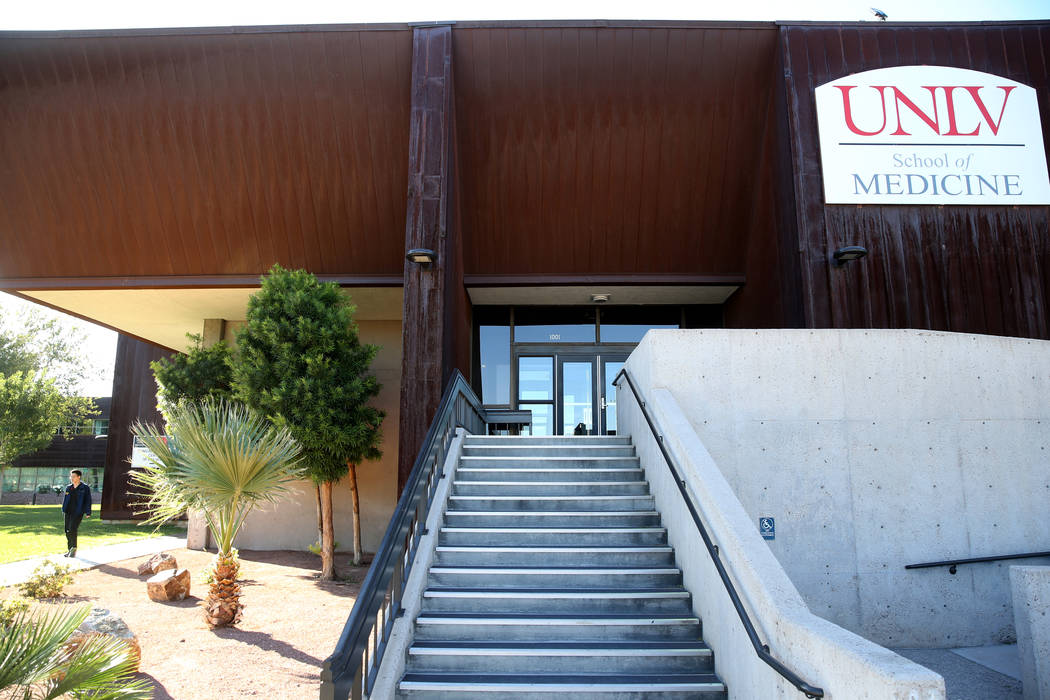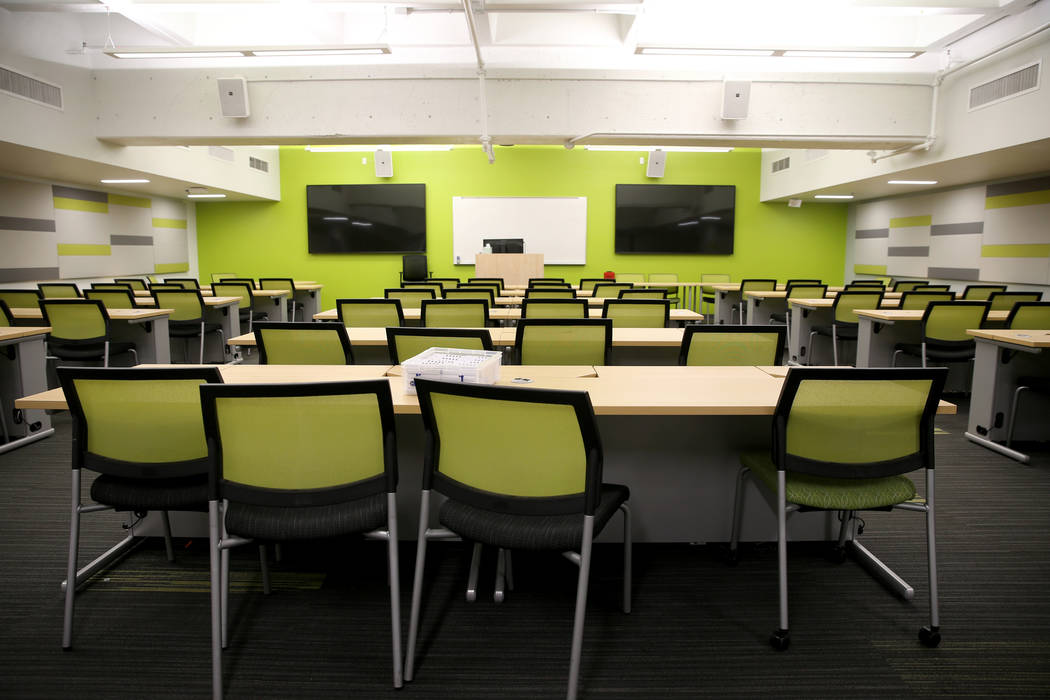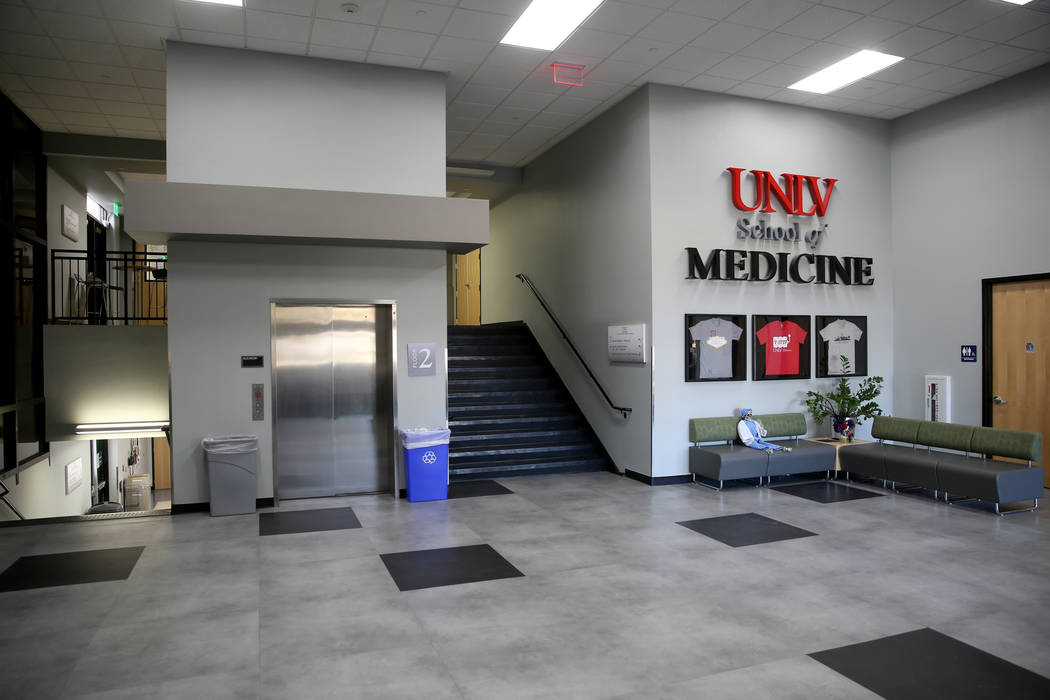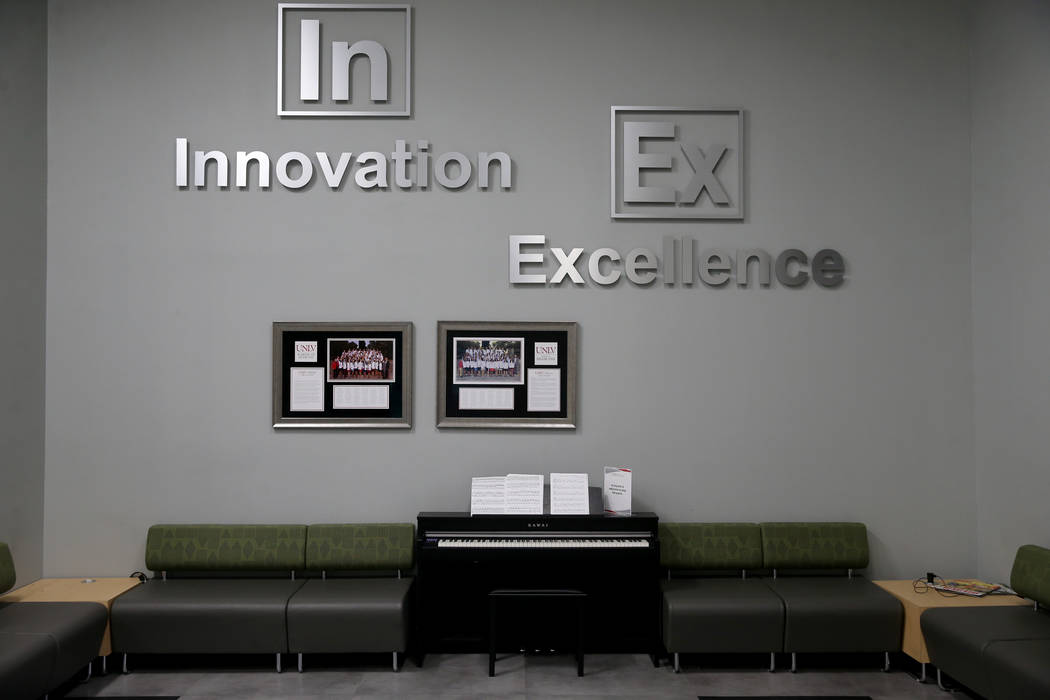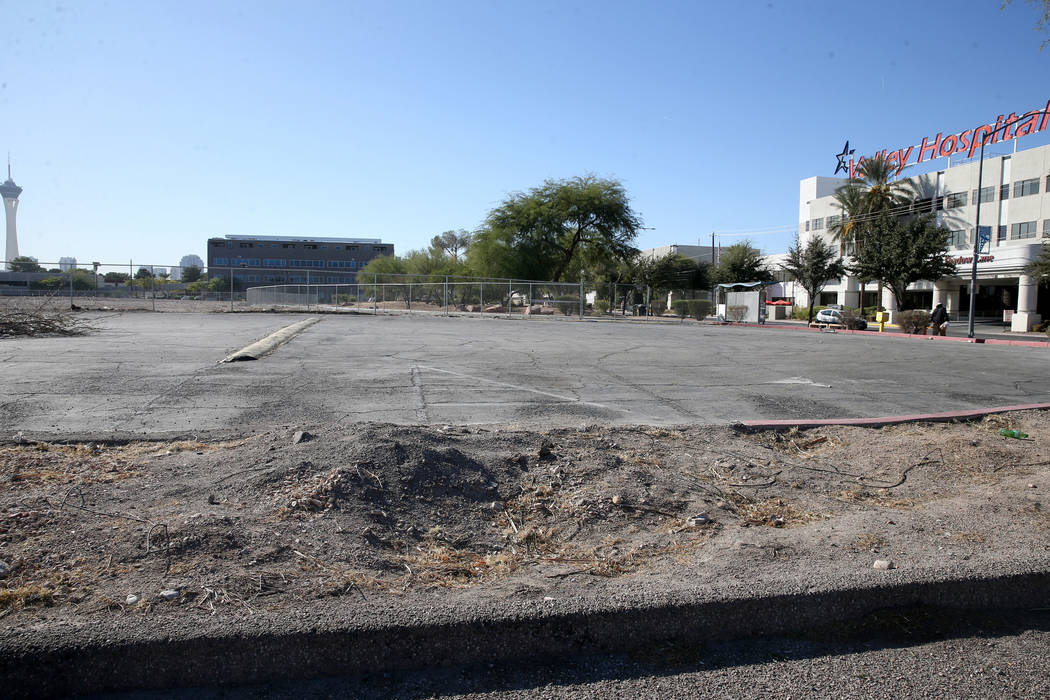As new plan for UNLV medical building takes shape, questions emerge
As the plan to build UNLV’s medical school finally takes shape, questions about how the university and its circle of benefactors might interact also have begun to emerge.
Gov. Steve Sisolak announced this month that a group of donors would take on the construction and design of the new building.
The donors include the Engelstad Foundation, the Lincy Foundation and others who prefer to stay out of the public eye, according to Engelstad Foundation trustee Kris Engelstad McGarry.
“It’s been a long time coming,” McGarry said. “Why would you want to bond and go through public works, and have taxpayers pay it when you have a group that can do it privately and do it more cost effectively, too?”
Medical school background
After pulling a $14 million donation from the building following the tense departure of former UNLV President Len Jessup in April 2018, McGarry said she took time to reflect on the best way to move forward. Seeing the university’s plans to finance the building start to fall apart — leading to a proposal to fund the building through the sale of $125 million in bonds — McGarry said she approached other donors with a plan in mind to build the school privately.
“Not a single one hesitated,” McGarry said. “We saw a need and could put our resources together to fill it.”
Few details about the new building are ready to share, according to McGarry. A name has been proposed, but it’ll be kept quiet until the group is ready to reveal it. The group plans to leave the design to professionals, who will base it on other medical schools around the country, as plans for the building have gone through a number of revisions.
McGarry said that in her view, UNLV representatives would not necessarily have input about the design or planning of the new school. But she emphasized the final decision on such matters would rest with the donors.
“I don’t know that we’re terribly interested in their opinion. Of course, whoever the next president of the university will be, we’d like to be inclusive and hear what they’d have to say,” McGarry said. “But you say thank you to a gift. I would hope that you don’t say all the things you don’t like about it.”
Hockey arena at UND
This is not the Englestad Foundation’s first rodeo when it comes to campus buildings.
The foundation is also part of a development corporation that owns and operates the Ralph Engelstad Hockey Arena at the University of North Dakota.
McGarry said the foundation donated $110 million to build the facility, and handles maintenance and upkeep as part of a 30-year lease to the university.
The two entities have a revenue-sharing agreement, which will end when the arena is turned over to the university at the end of the term. The exact terms of the donor group’s arrangement with UNLV have yet to be announced.
A lease of that length means an extended relationship with a university, through the tenures of multiple presidents and in NSHE’s case, through a possible major shake-up next year as voters decide whether to remove the Board of Regents from the state Constitution.
It’s not uncommon for new leadership to want to shake things up, according to McGarry, which can lead to friction in the relationship with donors.
“Every time there’s a change, they want to renegotiate the agreement.” McGarry said, referring to the situation at UND.
Earlier this year, McGarry described her foundation’s relationship with UND President Mark Kennedy as “hostile,” in a Grand Forks Herald editorial interview. McGarry told that newspaper that Kennedy had hinted at litigation over the terms of the existing revenue-sharing system, which awarded 52 percent of revenue to the development corporation and 48 percent to the school.
Kennedy has since left the school, and declined a request for comment from the Review-Journal.
Engelstad did not reference Kennedy by name in a talk with the Review-Journal, but said she believed a deal is a deal.
“In behaving that way, they have sent a horrible message of, ‘Thank you. We’ll take your money now,’” Engelstad said.
The school and the Engelstad Foundation have also clashed over the university’s former Fighting Sioux nickname and logo. The school officially changed its nickname to the Fighting Hawks in 2015 after a battle with the NCAA, but the Fighting Sioux logo remains prominently featured throughout the arena at the express request of Ralph Engelstad, who had 2,500 instances of the logo put in to discourage a future name change, according to the New York Times.
Attorney says cooperation is key
California attorney Justine Kastan, who specializes in public-private partnerships (or P3’s), said the key to successful cooperation between public and private entities is to have all parties define what’s important to them and agree to the parameters early on.
“My experience has been, like any arrangement, it comes down to the parties involved,” Kastan said. “The devil’s in the details, the exact terms of the arrangement they end up entering into.”
Kastan said there’s no template for these agreements: They can take on all kinds of models, from a more traditional lease, to an availability payment model to revenue-sharing and more. Specifics about which party controls what can be written into the agreement to avoid confusion later on, Kasten said.
Kastan said P3’s are not a common arrangement when considering all facilities construction projects, but they tend to have some defining characteristics: they’re typically high-dollar projects of $100 million of more and they likely have many moving parts.
“Something complex, like say a medical school, with state-of-the-art equipment, or something with lots of pieces to coordinate, the government side might say, ‘This isn’t our expertise, so we’re going to look for someone who has expertise in that area,’” Kastan said.
Kastan said she’s not familiar with the development corporations funding the facilities at UNLV or UND, but that generally speaking, communication and collaboration help the process go smoothly.
“There’s more opportunity for integration in the design and construction phase, so it’s important to get people to sit around a table and talk early on,” Kastan said. “Considering that this an arrangement that will last a long time, all parties should be involved.”
Contact Aleksandra Appleton at 702-383-0218 or aappleton@reviewjournal.com Follow @aleksappleton on Twitter.



